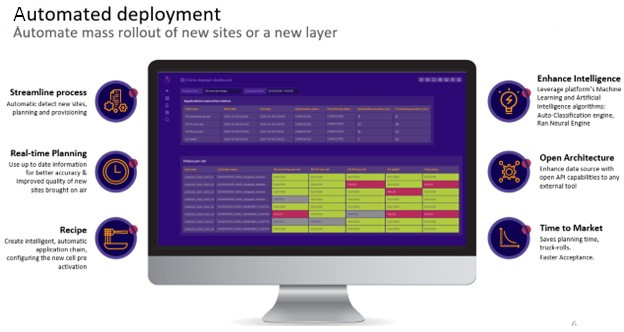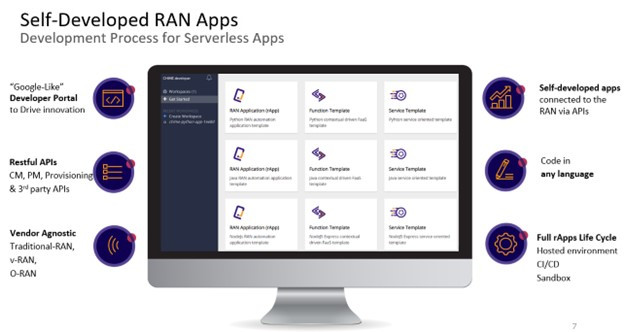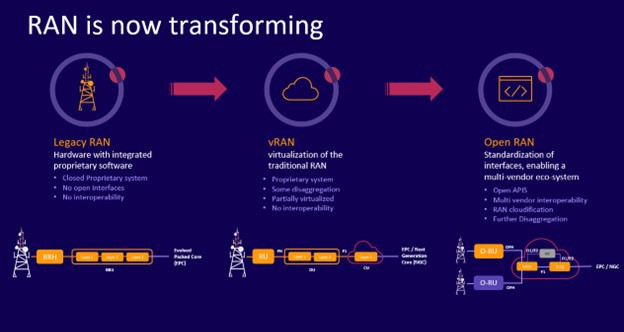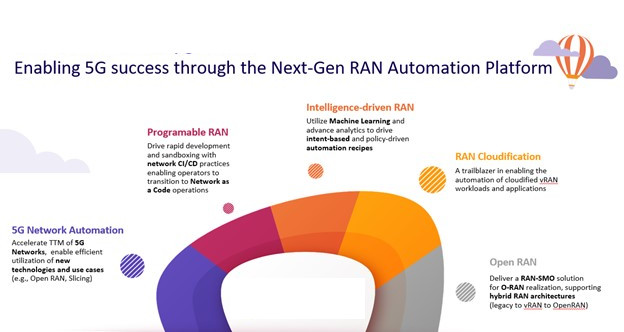Planet Tools
Software RF planning and optimization software that assists telecommunication operators in planning and optimizing the performance of telecommunication networks across all technologies such as 2G, 3G, 4G, 5G, and IoT.
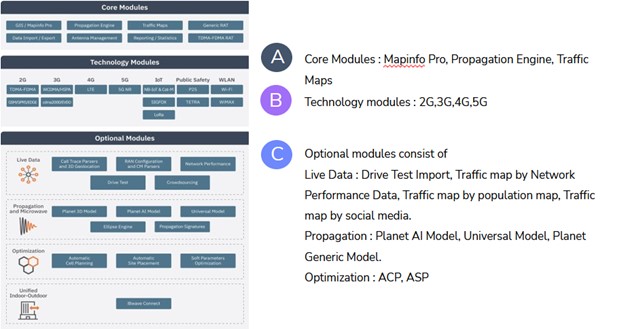
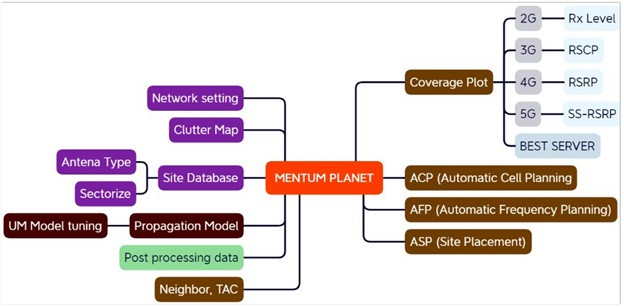
One of the function using Planet is coverage plot simulation using antenna type with its pattern, consider with digital map (clutter and clutter height), propagation model and other calculation .Best server also can be utilized to optimizing the network.

Why Using Planet Tools
- Supporting the development of new technology, increasing capacity, and enhancing subscriber/customer experience while managing costs effectively.
- Increasing confidence in radio quality and reducing OPEX.
- Flexible embedded with map info.
Ellipse Tools
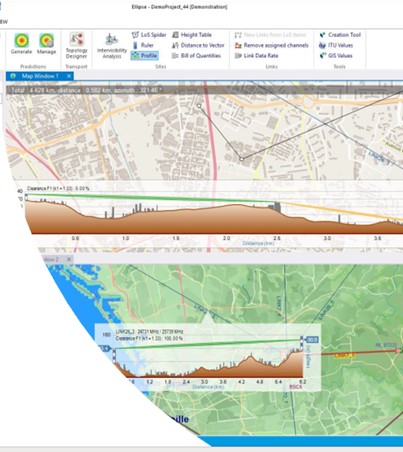 Planning and software optimization for backhaul Transmission Network.
Planning and software optimization for backhaul Transmission Network.
- Addresses point-to-point and point-to-multipoint wireless networks
- Supports non-wireless transmission links (e.g.fiber)
- Design and Optimization of transmission network topologies, capacity and latency ready for 5G
- Offers advanced interference analysis automated channel allocation enabling better efficiency
- Hosts comprehensive data management in support carrier-grade implementations
Built-In GIS
- Provides a rich geographical user interface
- On-line access to free-of-charge geodata (SRTM)
- Option to download OSM vectors
- Multi-resolution support
- Support for multiple UTM zones within same project
- Powerful and fully customizable layer display options
- Rich set of standard formats
- Mapinfo grids (grd/grc, mrr) for height and clutter display
- Shape and Mapinfo vector format, including building heights
- Image data (JPG, TIFF, BMP, PNG, GIF)

Why using tools Ellipse :
- To design and plan backhaul networks with point-to-point and point-to-multipoint links that deliver high backhaul reliability.
- To optimize backhaul cost while meeting capacity and quality & availability requirements.
- To increase the work efficiency of transmission engineers with automated functions and reporting.
- To manage complete backhaul networks with support for non-wireless links e.g. mix of MW, fiber, copper lines, etc.
Inventory Management System
Application for telecomunication service providers, network, operator, and infrastructure providers to efficiently manage their optical fiber infrastructure.
and infrastructure providers to efficiently manage their optical fiber infrastructure.
Why Using this app?
- Network Mapping and Monitoring
- Capacity Management
- Analysis and Reporting
- Optimal Route Planning
| Technical | Functional |
|---|---|
|
|

SON (Self-Optimizing Network)
Self-Optimizing Network (SON) It is a concept in telecommunications technology that refers to a network capable of automatically configuring, managing, optimizing, and healing itself without human intervention. The primary goal of a Self-Optimizing Network (SON) is to enhance network performance, operational efficiency, and overall user experience.
SON It is typically used in cellular networks, such as 4G LTE and 5G, and encompasses several key functions:
- Self-Configuration: The network’s ability to organize and configure itself when new devices are added or when the network is first activated.
- Self-Optimization: The network’s ability to continuously monitor its performance and make automatic adjustments to optimize service quality and efficiency. This includes adjusting parameters such as transmission power, frequency, and resource allocation.
- Self-Healing: The network’s ability to detect problems or failures and automatically take corrective actions to minimize the impact on services. This includes rerouting traffic, activating backup hardware, or adjusting network configurations.
- Self-Protection: The network’s ability to automatically identify and respond to security threats or anomalies, maintaining the security and integrity of data and services.
By implementing SON, network operators can reduce operational costs, enhance performance and service quality, and increase speed and efficiency in managing complex networks. SON is an integral part of future network development, especially with the increasing complexity and demands on 5G networks.
 Openmind Networks provides communications solutions that enable mobile operators and telecommunications service providers to manage message traffic efficiently and securely. The company is known for innovation and reliability in short messaging technology.
Openmind Networks provides communications solutions that enable mobile operators and telecommunications service providers to manage message traffic efficiently and securely. The company is known for innovation and reliability in short messaging technology.
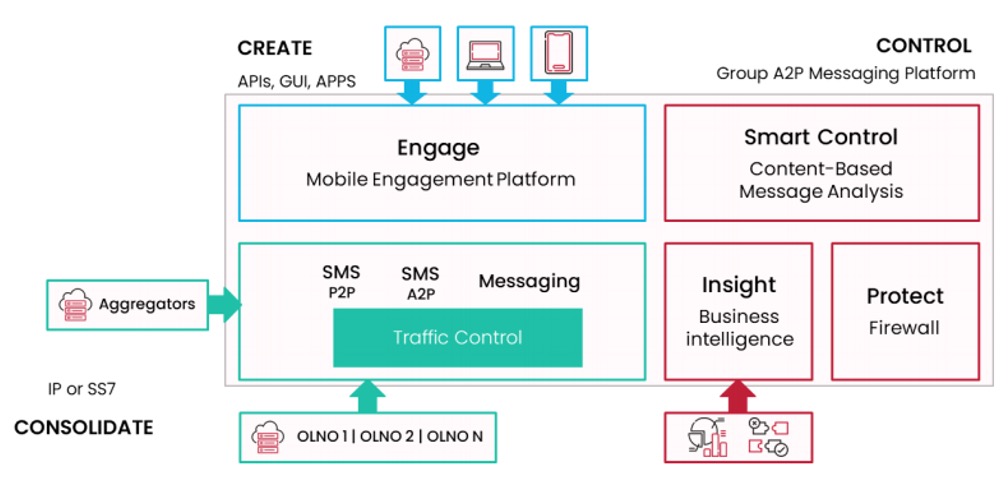
Products and Services
- Traffic Control Platform: A platform designed to manage and optimize message traffic, ensuring that messages are delivered efficiently and reliably.
- SMS Firewall: Security solutions that protect networks from threats such as spam, fraud, and other attacks that can damage messaging services.
- Messaging Solutions: Various message management solutions that support SMS, MMS and other messaging services. This solution is designed for mobile operators and wholesale service providers.
- Rich Communication Services (RCS): Supports new communications standards that enable richer messaging features, such as media sharing, group chat, and more.
Excellence
Extensive Experience
With roots in the early days of SMS, Openmind Networks has deep experience in the short messaging industry.Technological Innovation
Continuously develop new technologies to face modern communications challenges.Global Reach
Providing solutions to mobile operators and wholesale service providers worldwide.Benefits for Customers
Reliability and Efficiency
A reliable solution to ensure efficient message delivery.Security
Protects the network from external threats that can disrupt services.Scalability
A scalable solution to meet the needs of both large and small operators.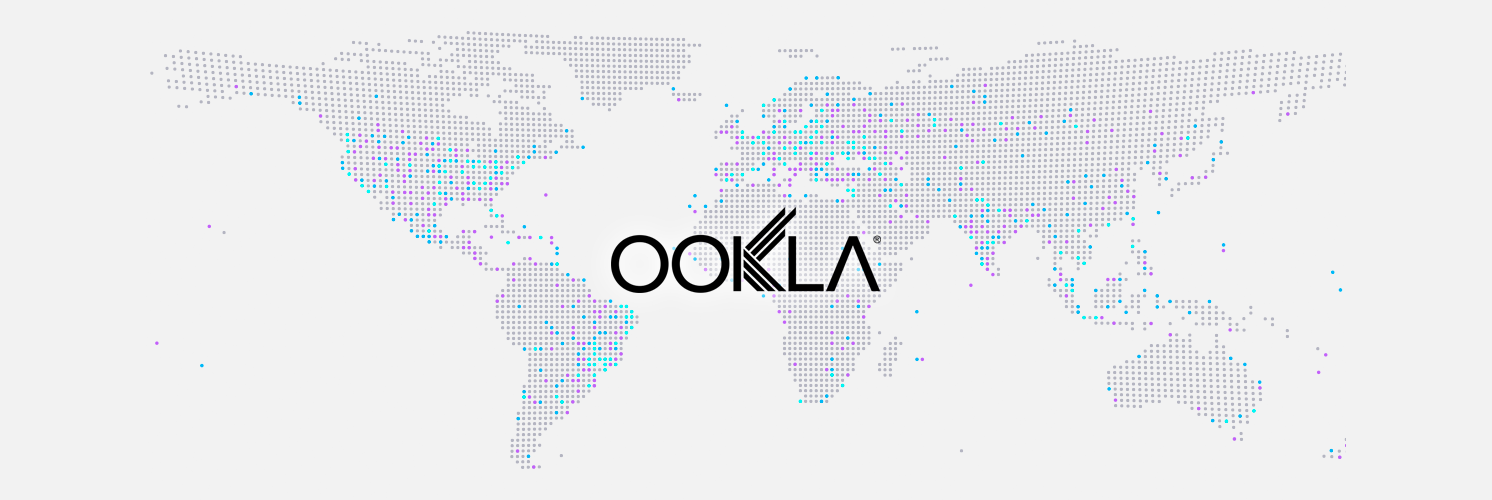
Ookla is the global leader in connectivity insights
- The trusted data provider to regulatory bodies, governments, NGOs, trade groups, operators, and analysts
- Customers include virtually every major ISP and carrier in the world
- 15+ years of proven technology purpose-built for accurate performance

Why Ookla?
Ookla is the global leader in internet testing, data and analysis. Speedtest®, the company’s flagship product, is the most accurate way to measure internet performance and network diagnostics.
Fixed Broadband
- Validate data provided by ISPs
- Inform service providers where investments can be made for the most public benefit
- Analyze network access and performance in underserved areas, along high-traffic routes and in public spaces
Mobile
- See reported service footprints for nearly every mobile operator in the world
- Access mobile network performance data from billions of consumer-initiated Speedtest results
- Benchmark consumers’ real-world internet experience against providers’ reported coverage and performance metrics
- View in-depth mobile network coverage information – as well as time spent on a network and its accessibility – measured from background tests running for 300M+ daily unique Speedtest users
- With access to these three distinct datasets, Ookla is the only provider to offer a comprehensive view of the global coverage landscape

Ookla provides and end-to-end view of networks, through the lens of consumer experience


Ookla Solutions Insights empower operators, businesses, government agencies, nonprofits, more to analyze, optimize, and publicize networks around the world


Kacific Mobile Backhaul
 Kacific Mobile Backhaul provides 3G and 4G coverage to end-users, connecting them to any small cell or regular mobile tower. Choose between dedicated Kacific VSAT capacity and pooled Kacific bandwidth. You can rapidly deploy small, low power consumption satellite dishes in places beyond the reach of costly terrestrial infrastructure, vastly reducing the cost and complexity of remote terminal installation.
Kacific Mobile Backhaul provides 3G and 4G coverage to end-users, connecting them to any small cell or regular mobile tower. Choose between dedicated Kacific VSAT capacity and pooled Kacific bandwidth. You can rapidly deploy small, low power consumption satellite dishes in places beyond the reach of costly terrestrial infrastructure, vastly reducing the cost and complexity of remote terminal installation.
In urban areas, Kacific Mobile Backhaul fuels a high-speed data system at a cost per GB that is competitive to terrestrial technologies. Flexible bandwidth shared between distant sites allows you to offload congested urban areas during peak hours, meeting demand as it occurs.
- Affordable, high-speed internet
- Flexible bandwidth distribution
- Rapid, low cost deployment
- Seamless integration into existing networks
Features
High-throughput modem (up to 200 Mbps)
Dedicated wholesale bandwidth
Share bandwidth across multiple sites
Satellite dish sizes: 1.2m, 1.8m, 2.4m, 4.5m
Link availability between 99.1% and 99.9% depending on terminal size and location
Manage your own bandwidth across your cellular sites
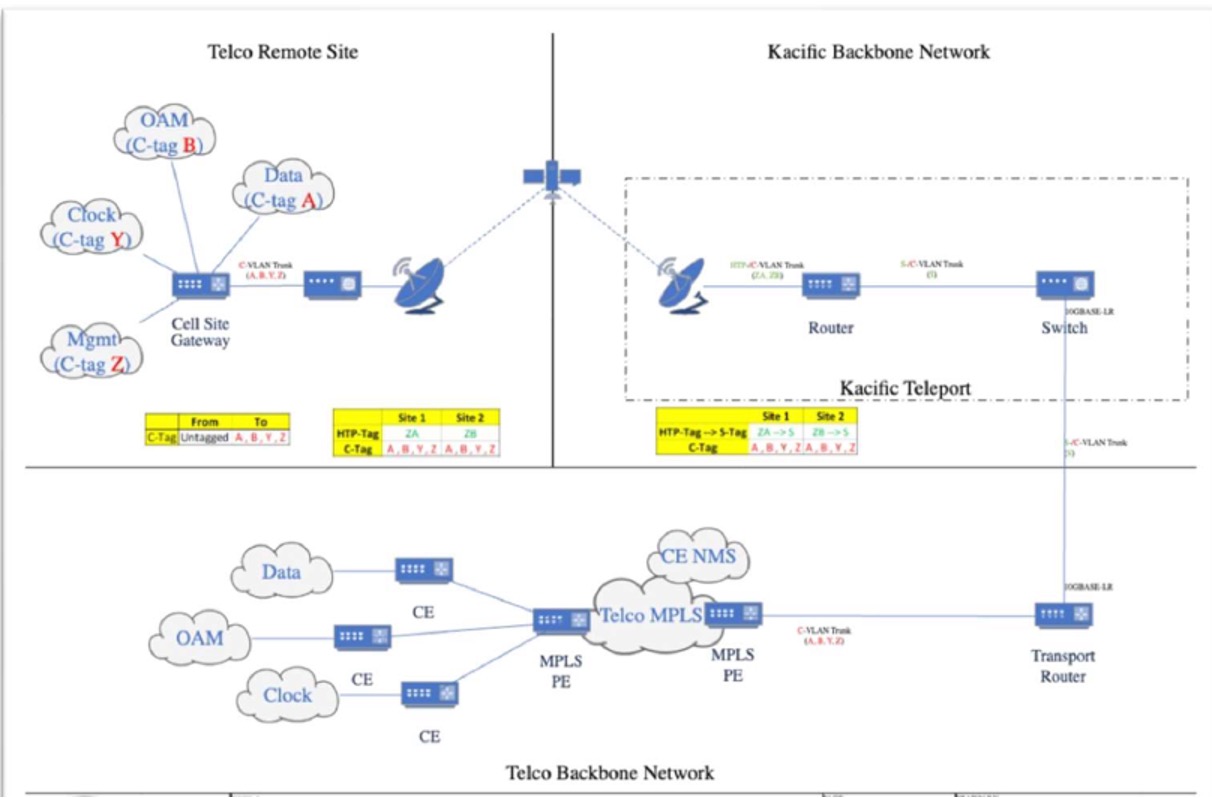
Customer to provide Layer 2(L2) C-VLANs from the core network and appends an outer tag S-VLAN on the ingress port of the Customer switch which interfaces with the Kacific switch. C-VLANs identify the Customer service
(2G,3G,4G) and an S-VLAN uniquely identifies the Customer.
The Kacific switch operates in trunk mode. The Egress port of the Customer switch connecting to the Kacific hub network is a trunk port sending out L2 QinQ traffic.
On the remote side, Kacific will provide transparent L2 with C-VLANs carrying customer traffic for 2G, 3G and 4G service (C-VLANs can optionally be translated to C-VLANs if required).

